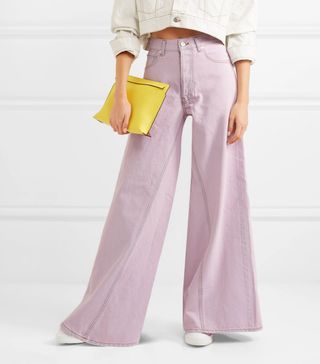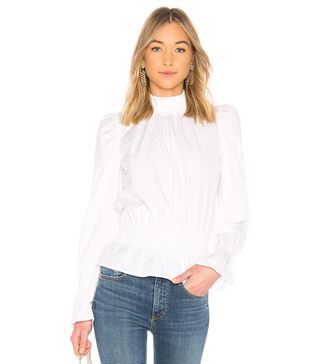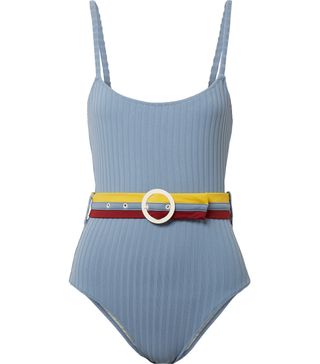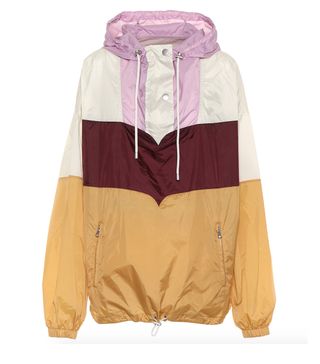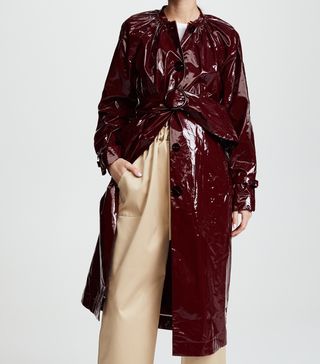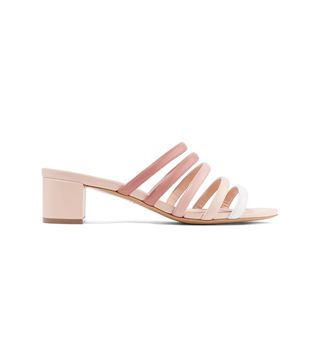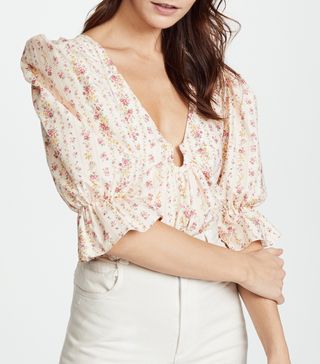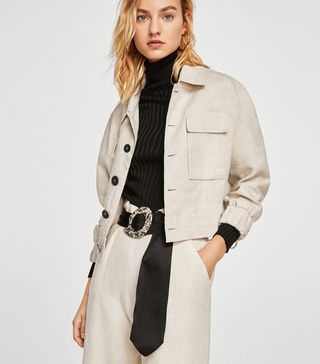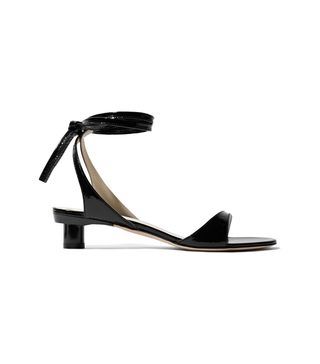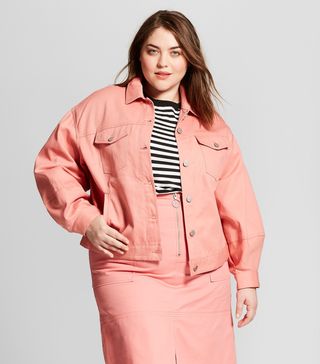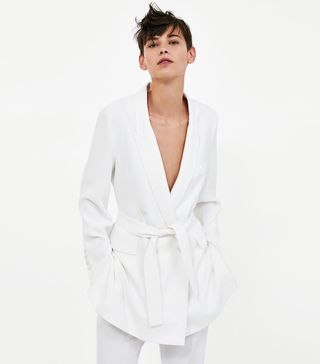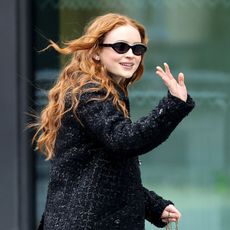Queer Eye's Fashion Expert on the Biggest Style Mistake to Avoid
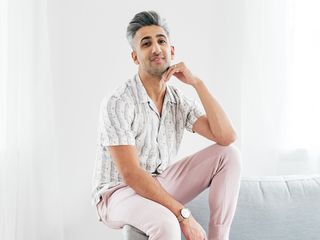
Just a month and a half ago, Netflix released Queer Eye, a reboot of the early-2000s Queer Eye for the Straight Guy. But this isn’t just a remake. It’s a reimagining of the original, which we’re reminded of in the show opening. “The original show was fighting for tolerance. Our fight is for acceptance,” notes style expert Tan France.
Admittedly, this editor was hooked on the show from the moment it landed on her screen in February. Each episode featured a physical home and fashion makeover, sure, but also an emotional overhaul that aimed to break down stereotypes and open up new ways of thinking. And yes, nearly every episode ended with some tears running down my cheek.
This week, Who What Wear had the chance to speak with France, who chatted with us about his style advice, how he landed his role on the show, and the way people are responding to a face on television that “reflects who they are.”
Tell me a little bit about your background in fashion.
When I was young, my father owned a factory that did denim, and that’s when I really began to become obsessed with production, and I thought one day I wanted to pursue it. At a really young age, I knew I wanted to work in fashion, so I went to fashion college when I was 17 for fashion design. After college, I worked at a company doing operations for brands like Zara, and I thought, I’m going to learn as much as I can about operations, and then I’m going to start my own brand—I want to be a business owner. And so I worked for a few companies like Selfridges, a department store in the UK, and I decided to learn as many facets of a business as possible so that I could then make my own brand. Which I did. I worked with a brand called Kingdom & State, where we did apparel and swimwear, and then it really took off. And finally, the last brand I created was with blogger Rachel Parcell.
And then how did you transition to Queer Eye?
Because of Rachel Parcell, I was on the business’s Instagram a lot, so people started watching me and her together, which they found fun. I didn’t really think that people were watching besides our customers, but the casting department of Netflix was watching, and they had been looking for a fashion man for the show. On the last day of auditions, they called and asked if I would be willing to come out for an audition. I was, and I got the job. I’d never applied to TV before, but they offered the job to me, and I took it. It was kind of insane. I feel like I won the lottery.
Just in the last month, you’ve rocketed to social media fame. Tell me about that.
A very strange part of all of this is how connected real people are to the show. When they announced the show, I had a couple thousand followers, and I wasn’t into social media at all. When the show actually launched, I had 3000 followers, and my agent and management were saying, “Now it’s a good time to get you to 10,000 followers by the end of the month.” But on the first day, I got 19,000 new followers, and we were like, “Okay, this might be a thing.” I would get about 8000 or 9000 followers a day, and really engaged followers because they truly haven’t seen a version of me before. I think that’s the thing people are connecting with is that I am very much myself. If I’ve got an opinion, you definitely hear it. I get on average 800 to 1000 DMs a day at this point, and it’s people halfway across the world saying that they’re just so happy because finally they have someone to watch on TV that reflects who they are.
A lot of what happens in the fashion makeovers on Queer Eye is a transformation both physically and emotionally. What are you trying to achieve on the show through style?
I never go in with a set agenda. It’s always based on who that man is, what he does for his work, and what family life is like. Fashion makeovers are the background of our show, but we also do emotional makeovers. As far as I’m concerned, the style makeovers are secondary for me. It’s a way to get to the emotion I’m trying to get to.
Moving into your style advice, what are your favorite trends for women this spring?
I love the rubber trend. I think you can be in a jacket, I think you can be in a shirt, I think you can be the skirt. I think it’s so chic, but I think it’s definitely a trend that won’t be here for long. So don’t invest in your whole wardrobe being rubber. I also love the lilac trend for spring. I think it’s gorgeous. I know that there are many women who can pull it off top to toe, but I would suggest pieces of it, like a lilac dress. Put it in your accessories, put it in a jacket or a top—just don’t make it your whole look. Then, suiting. I think white suiting is gorgeous, but it can be completely impractical for women on the go. So again, find a way you can wear it so that you have a touch of it without wearing a full white suit. Go for a blazer or go for a pant.
What is the biggest style mistake women should avoid?
There’s only one thing that I want to say about this, which is being a slave to a trend is a major mistake that a lot of women make. I don’t think it’s appropriate to incorporate every trend into your wardrobe. I really miss the days of being classic and wearing what’s appropriate for you and your body. I think the one point where women and men struggle is that they fell like they have to wear something because it’s hot right now.
Is there something you think every woman should retire from her closet?
All the fashion girls are wearing the crazy clunky Balenciaga trainer sneakers. They look good right now, but I promise you: In five years time—no, in one year—you’re going to look back and think, That was a mistake.
What about denim?
I know that it was said that the most universally flattering pair of jeans you could wear as a woman is the boot-cut. But I think boot-cut is one of the most universally unflattering. They make your legs look wider than they are. I’m not saying you have to wear a skinny jean, but I love a jean that is tapered at the bottom—it’ll make you look taller and leaner. And I don’t love a low-rise jean. I think a mid-rise jean and a high-rise jean is much more flattering on most women’s bodies.
Can you tell me about future plans for Queer Eye?
I wish I could. What I will tell you is this: The show has become a huge success, bigger than any of us could have imagined. I could not imagine that we couldn’t get picked up for another season. [Update, March 27: Queer Eye has been renewed for a second season.]
Shop our favorite pieces for spring:
Kristen Nichols is the Associate Director, Special Projects at Who What Wear with over a decade of experience in fashion, editorial, and publishing. She oversees luxury content and wedding features, and covers fashion within the luxury market, runway reporting, shopping features, trends, and interviews with leading industry experts. She also contributes to podcast recordings, social media, and branded content initiatives. Kristen has worked with brands including Prada, Chanel, MyTheresa, and Luisa Via Roma, and rising designers such as Refine and Tove, and her style has been featured in publications including Vogue.com, Vogue France, WWD, and the CFDA. Before Who What Wear, Kristen began her career at Rodarte, where she worked on assistant styling, photo shoots, and runway shows, and at Allure, where she moved into print and digital editorial. She graduated from the University of Southern California, where she studied art history and business, and currently lives in New York.
-
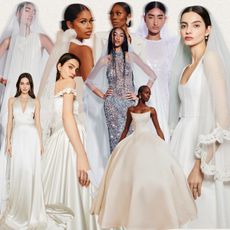 Bridalwear Is Booming, and These 3 Fashion Brands Want a Piece
Bridalwear Is Booming, and These 3 Fashion Brands Want a PieceIt's the new frontier.
By Jasmine Fox-Suliaman
-
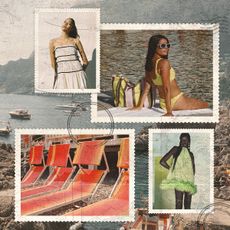 We're Fashion Designers—Here's What We Always Take With Us on Flights
We're Fashion Designers—Here's What We Always Take With Us on FlightsGrab your duffle bag.
By Jasmine Fox-Suliaman
-
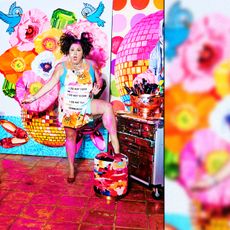 Pop Artist Ashley Longshore Is Raising Our Spirits With a Roar
Pop Artist Ashley Longshore Is Raising Our Spirits With a RoarHer gorgeous new book features the portraits of 57 inspiring women.
By Drew Elovitz
-
 Meet the Designer Behind Fashion Instagram's Biggest Décor Trends
Meet the Designer Behind Fashion Instagram's Biggest Décor TrendsEny Lee Parker's furniture has a legion of devoted fans.
By Indya Brown
-
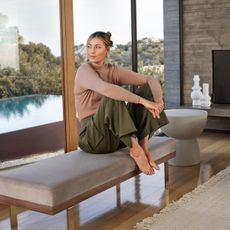 3 Home Trends Everyone Should Try in 2021, According to Maria Sharapova
3 Home Trends Everyone Should Try in 2021, According to Maria SharapovaYou can't go wrong.
By Erin Fitzpatrick
-
 How to Find the Perfect Bridesmaid Dresses to Complement Your Wedding Aesthetic
How to Find the Perfect Bridesmaid Dresses to Complement Your Wedding AestheticAccording to wedding dress designers.
By Kit Kilroy
-
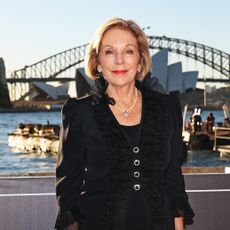 Publishing Icon Ita Buttrose Has Some Sage Advice For Millennial Women
Publishing Icon Ita Buttrose Has Some Sage Advice For Millennial WomenShe's so insightful.
By Kit Kilroy
-
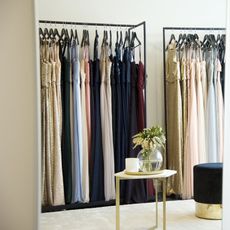 Here's What Bridesmaids Around the Country Will Be Wearing This Year
Here's What Bridesmaids Around the Country Will Be Wearing This YearAccording to a pro.
By Kit Kilroy
